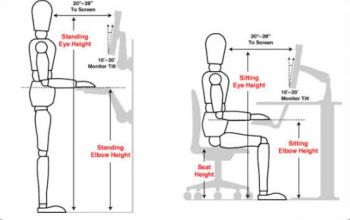Apply the Principles of Good Posture When Sitting
A fairly high proportion of us spend up to eight hours a day working in an office environment. Bad posture puts pressure on your lower back, it is especially true when sitting, the spine is compressed which can cause inflammation and ultimately pain.
Bad backs occur slowly and over time, unless of course you have suffered a trauma of some kind. To avoid back ache you will need to maintain a good sitting posture. Orthopaedic surgeons will tell you not to just collapse into a chair when sitting down, slumping in a chair is definately one to avoid. Your chair should support your back well. This should allow the muscles, ligaments and tendons in your back to relax, and align the spine. If you do not have any activities because your job involves sitting down all day, then you will need to exercise to keep your back in optimum condition, consult with your Orthopaedic surgeon who may refer you to a physiotherapist.

Top Tips.
· Check your posture on a regular basis, be mindful of the pressure that bad posture puts on your back
· Sit without slumping; it is never too late to adjust how you sit
· Use a chair that is designed to support your lower back
· Use a chair that has a bottom-cushion or other support so that your buttocks reach the backrest while your back remains erect
· You will need a chair that is low enough to put your feet on the floor
· Seats that are too high make people slide forward into a slumped position
· Make sure your head and shoulders are not being pushed into a forward or awkward position
· Sit and stand in such a way that your bones are evenly balanced Since pain in the back is often caused by inflammation, the Arthritis Foundation recommends that you “chill the joint when you have a sudden flare-up”. Most offices have a fridge/freezer these days, apply a cold pack for 20 minutes, but make sure you protect the surface of your skin first.
It is estimated that forty per cent of UK adults had back pain in the previous year, with 15 per cent in continuous pain; the survey was carried out by the Department of Health 2010. To help you eliminate discomfort keep thinking about your posture, how you sit, the kind of chair you sit in, how your work space is arranged. Take time to stretch throughout the working day, this can also be done from a sitting position. Take care of your back, it is the only one you have.